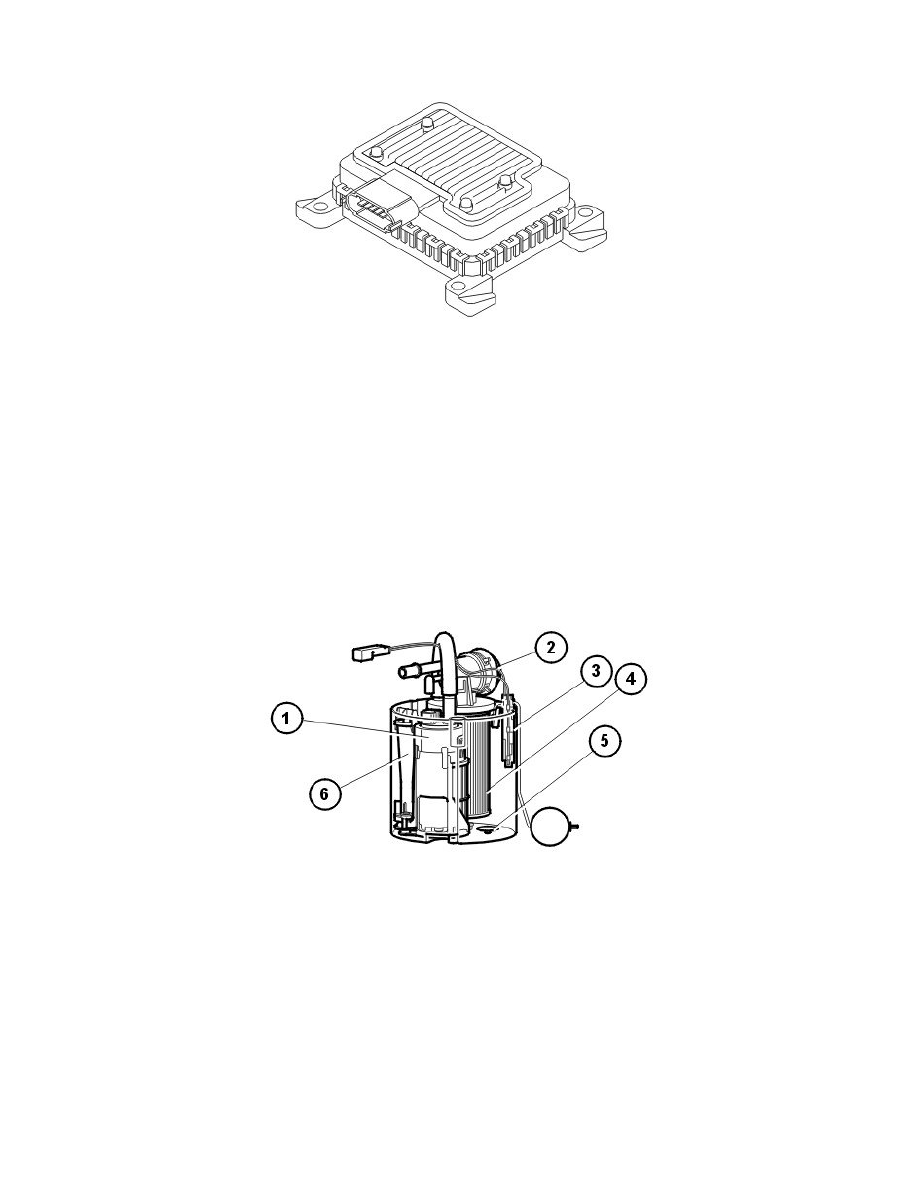S60 L5-2.4L VIN 64 B5244S6 (2003)

Fuel pump control module (only vehicles with demand controlled fuel pumps)
The fuel pump control module powers the fuel pump and regulates the output of the pump. The fuel pressure changes with the output of the pump.
The fuel pump control module is supplied with battery voltage by the fuel pump (FP) relay and is grounded in the car body. The fuel pump (FP) relay is
controlled by the central electronic module (CEM) when requested by the engine control module (ECM).
The engine cannot be started if the power supply to the fuel pump control module is faulty because the fuel pump will not then be powered.
The fuel pump control module is controlled by the engine control module (ECM) via serial communication. The fuel pump control module then controls
the fuel pump by transmitting pulse width modulated (PWM) signals on the ground lead for the fuel pump. This means that the voltage drop across the
fuel pump changes, and with it the output of the fuel pump. See also: Function See: Powertrain Management/Computers and Control
Systems/Description and Operation/Engine Management System/Function
The central electronic module (CEM) controls the fuel pump (FP) on models without on-demand fuel pumps.
There are no diagnostics for the fuel pump control module. The engine control module (ECM) has diagnostics for fuel pressure regulation and the
associated components.
The pulse-width modulated (PWM) signal from the engine control module (ECM) to the fuel pump control module can be read using VIDA.
The fuel pump control module is on the outside of the fuel tank.
Fuel pump (only vehicles with demand controlled fuel pumps)
The central electronic module (CEM) controls the fuel pump (FP) on models without on-demand fuel pumps.
The function of the fuel pump is to ensure that the pressure is correct in the delivery lines for the injectors when requested by the fuel pump control
module.
The fuel pump consists of:
1. An electrical pump with an integrated safety valve
2. A pressure equalization valve. This valve equalizes rapid pressure peaks which occur, for example, when the injectors close during engine braking.
The built-in check valve ensures that the system pressure does not drop when the engine is switched off
3. Fuel level sensor
4. Fuel filter, cannot be replaced separately
5. Relief valve, releases fuel into the pump housing
6. Ejector pump, continuously fills the pump housing with fuel. The fuel always flows from the fuel pump through the ejector and back to the pump
housing.
The fuel pump is supplied with battery voltage by the fuel pump control module and is grounded in the car body via the fuel pump control module.
The engine control module (ECM) has diagnostics for the fuel pump function to ensure that the pressure is correct.
The fuel pump can be activated and its status read off using VIDA.
The pressure in the fuel rail can be measured by connecting a manometer to a nipple. This nipple is on the right-hand end of the fuel rail.
